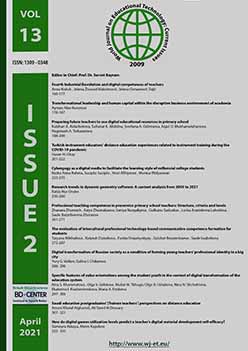Research trends in dynamic geometry software: A content analysis from 2005 to 2021
Research trends in dynamic geometry software: A content analysis from 2005 to 2021
Author(s): Rabia Nur ÖndeşSubject(s): Education, ICT Information and Communications Technologies
Published by: Birlesik Dunya Yenilik Arastirma ve Yayincilik Merkezi
Keywords: Dynamic geometry software; DGS, GeoGebra; content analysis; mathematics education;
Summary/Abstract: Dynamic geometry software (DGS), especially GeoGebra, have been used in mathematics lessons around the world since it enables a dynamic learning environment. To date, there exist so many published researches about DGS, which leads to the need for meaningful organisation. This study aims to give a broad picture about researches related to DGS. For this reason, 210 articles accessed from the Web of Science database were analysed in terms of their purpose, research design, sample level, sample size, data collection tools and data analysing methods by using the content analysis method. According to the findings, for each section the most frequently used ones were as follows: ‘the effect of DGS on something’ as a purpose, qualitative method as a research design, high school students as a sample level, 101–300 intervals as a sample size, documents and achievement tests as instruments and descriptive analysis for quantitative and qualitative studies. These results can help researchers to see the past trends in DGS and conduct new studies
Journal: World Journal on Educational Technology: Current Issues
- Issue Year: 13/2021
- Issue No: 2
- Page Range: 236-260
- Page Count: 25
- Language: English

